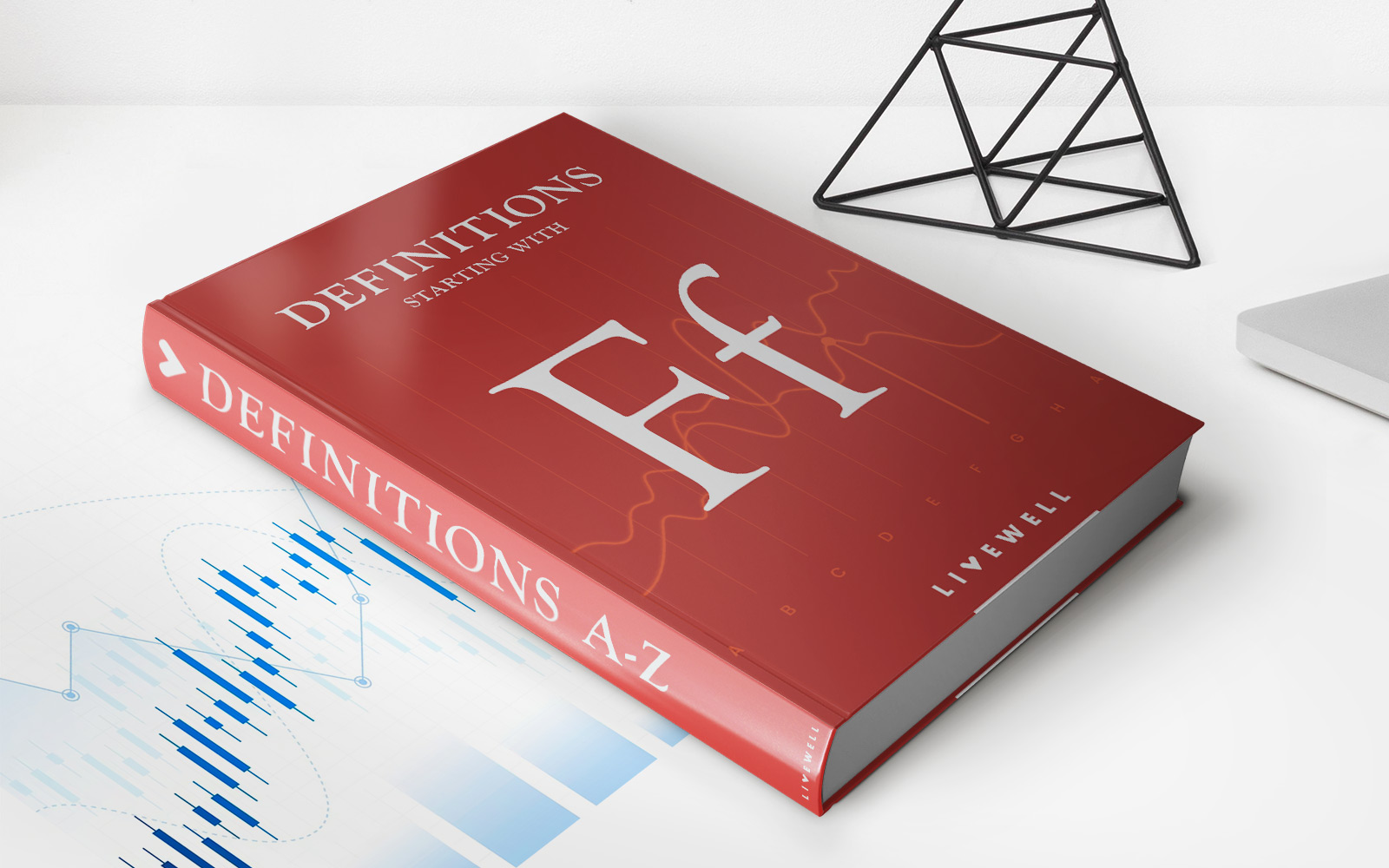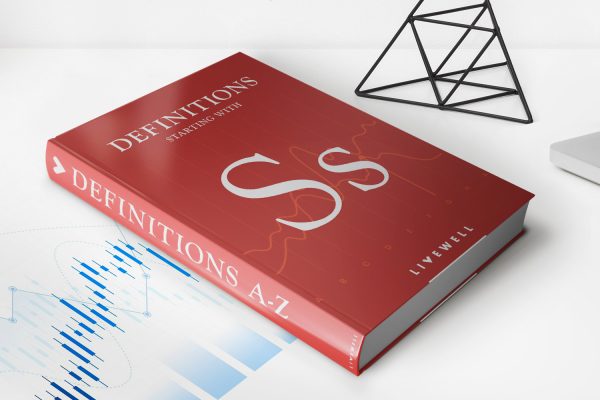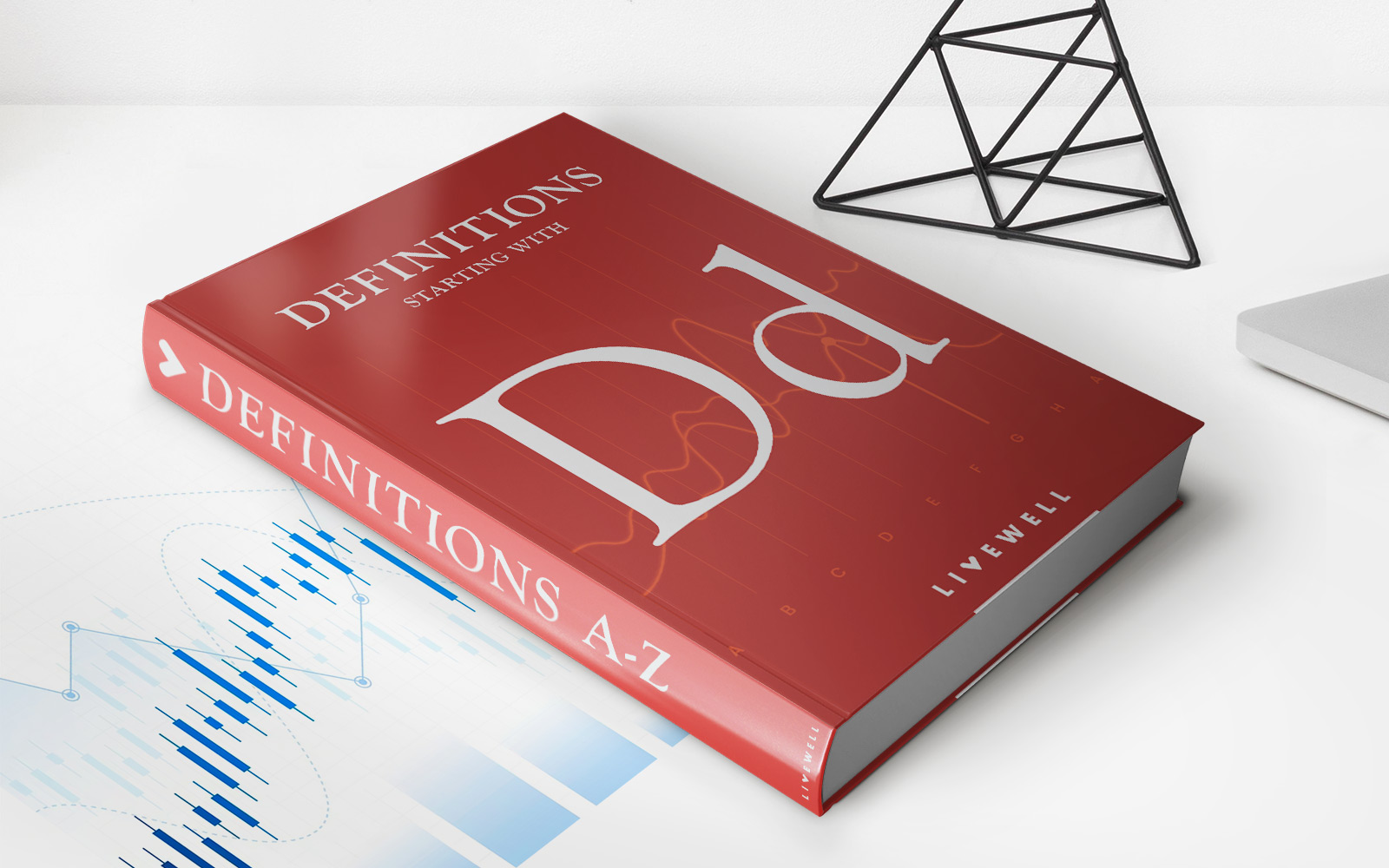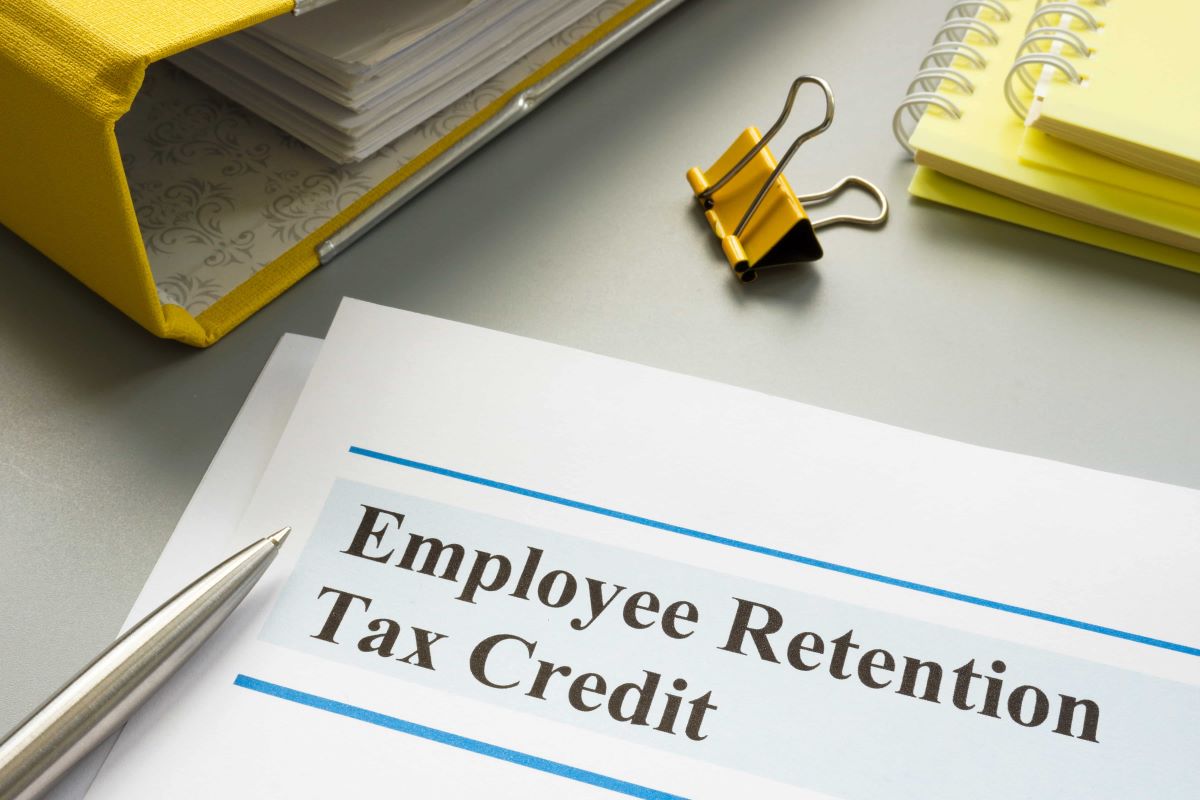

Finance
What Is A Final Salary Pension
Published: November 27, 2023
Learn the ins and outs of final salary pensions and how they can impact your personal finance. Get expert advice and insights on managing your retirement funds.
(Many of the links in this article redirect to a specific reviewed product. Your purchase of these products through affiliate links helps to generate commission for LiveWell, at no extra cost. Learn more)
Table of Contents
Introduction
Welcome to the world of pensions! If you’ve ever wondered about retirement planning, you’ve likely come across the term “final salary pension.” But what exactly is a final salary pension and why is it such a popular option for retirement planning? In this article, we will explore the intricacies of final salary pensions, how they work, their benefits and risks, and how they compare to other pension schemes.
A final salary pension, also known as a defined benefit pension, is a retirement plan that provides a guaranteed income for the rest of your life. Unlike other types of pensions, which are based on contributions and investment returns, a final salary pension is calculated using a formula that takes into account your final salary and years of service with your employer.
Final salary pensions are typically offered by large employers, government agencies, and certain industries, such as banking and education. They have long been considered one of the most generous pension schemes, offering stability and security to retirees.
Now, you might be wondering, why are final salary pensions so highly sought after? The answer lies in the guaranteed income they provide. With a final salary pension, you can retire knowing exactly how much income you will receive each month, regardless of market fluctuations and interest rates. This fixed income can provide peace of mind and financial security, allowing you to plan for retirement without worrying about running out of money.
Additionally, final salary pensions often come with other valuable benefits, such as inflation protection and survivor benefits. The income you receive from a final salary pension is typically adjusted annually to keep pace with inflation, ensuring that your purchasing power remains intact throughout your retirement. Furthermore, if you have a spouse or dependents, they may continue to receive a portion of your pension benefits after your death, providing them with financial support.
However, as with any financial decision, there are risks and challenges associated with final salary pensions. It’s important to understand these before making any decisions about your retirement savings. In the following sections, we will delve deeper into the workings of final salary pensions, their benefits, risks, and how they compare to other pension schemes.
Definition of Final Salary Pension
A final salary pension, also known as a defined benefit pension, is a type of retirement plan that guarantees a fixed income for the rest of your life based on your final salary and years of service with your employer. It is a traditional and highly sought-after pension scheme, offering stability and security to retirees.
In a final salary pension, the calculation of your retirement benefits is based on a formula that considers your final salary, often averaged over the last few years of your employment, and the number of years you have served in the company or organization. Typically, the longer you have worked and the higher your final salary, the higher your pension income will be.
Unlike other types of pensions, such as defined contribution or money purchase schemes, where the income in retirement depends on how much money has been contributed and invested, a final salary pension provides a guaranteed income regardless of market conditions or investment returns. This means that even if the stock market declines or interest rates plummet, your pension income will remain unaffected.
Final salary pensions are usually provided by large employers, government bodies, and certain industries with strong pension schemes, such as the military or education sector. These employers contribute to a pension fund on behalf of their employees, and the fund is responsible for paying out the pension benefits when employees retire.
One of the key features of a final salary pension is its inflation protection. The income you receive from a final salary pension typically increases annually to keep pace with inflation. This ensures that your purchasing power remains relatively stable throughout your retirement years, allowing you to maintain a comfortable standard of living.
Another important aspect of final salary pensions is survivor benefits. If you have a spouse or dependents, they may be entitled to receive a portion of your pension benefits after your death. This can provide financial support for your loved ones, even when you are no longer around.
It’s worth noting that in recent years, final salary pensions have become less common as employers shift towards defined contribution schemes, which transfer the investment risk to employees. However, many individuals still have access to final salary pensions due to historical schemes or employment in sectors that continue to offer them.
How Final Salary Pensions Work
Understanding how final salary pensions work is essential to making informed decisions about retirement planning. Let’s delve into the mechanics of these pension schemes and explore the key factors that determine your pension income.
When you join a company or organization that offers a final salary pension, you become a member of the pension scheme. As an active member, you start accruing pension benefits based on a formula that takes into account your final salary and years of service.
The calculation of your final salary pension begins with determining your pensionable salary, which is typically the average salary over the last few years of your employment. This ensures that your pension reflects your career progression and earning potential.
The next element is the accrual rate. The accrual rate determines how much pension you will receive for each year of service. It is usually expressed as a fraction or percentage of your pensionable salary. For example, an accrual rate of 1/60 means that for every year of service, you will receive 1/60th of your pensionable salary as your annual pension.
To calculate your pension income, you multiply your pensionable salary by the accrual rate and the number of years of service you have accumulated. Suppose your pensionable salary is $60,000, and you have worked for 20 years with an accrual rate of 1/60. Your annual pension would be ($60,000 x 1/60) x 20 = $20,000.
It’s important to note that final salary pensions offer benefits beyond the basic pension income. Many pension schemes have additional features, such as the option to exchange a portion of your pension for a tax-free lump sum at retirement. This lump sum can be used to pay off debts, invest, or enjoy a well-deserved holiday.
Final salary pensions are also known for their generous retirement age provisions. While the official retirement age may be set at 65, some pension schemes allow members to retire earlier with reduced benefits or postpone retirement to receive enhanced benefits. These options provide flexibility and enable individuals to align their retirement plans with their personal circumstances and goals.
Once you reach your retirement age, you can start receiving your final salary pension income. The payments typically continue until death, ensuring financial security throughout your retirement years. As mentioned earlier, final salary pensions often offer survivor benefits, which means your spouse or dependents may be entitled to a portion of your pension income after your death.
Final salary pensions are also subject to taxation. The income you receive from your pension is taxable, although there may be tax-free allowances and deductions depending on your jurisdiction and the specific rules of your pension scheme.
Overall, final salary pensions provide a structured and reliable income stream during retirement. By understanding how these pensions work and the factors that determine your pension income, you can effectively plan for the future and make informed decisions about your retirement goals.
Benefits of Final Salary Pensions
Final salary pensions offer a range of advantages that make them highly desirable for retirement planning. Let’s explore some of the key benefits of final salary pensions and why they are considered a valuable asset by many.
Guaranteed Income: One of the most significant benefits of a final salary pension is the guarantee of a fixed income for life. Unlike other types of pensions that depend on investment returns, market conditions, and the performance of your investments, a final salary pension provides a reliable source of income. This stability allows retirees to plan their finances with confidence, knowing exactly how much money they will receive each month.
Inflation Protection: Final salary pensions often come with built-in inflation protection. The income you receive from your pension is typically adjusted annually to keep pace with inflation. This means that your purchasing power remains relatively stable over the years, allowing you to maintain your standard of living even as the cost of living rises.
Survivor Benefits: Many final salary pension schemes provide survivor benefits for spouses and dependents. This means that if you pass away, your loved ones may continue to receive a portion of your pension income or a lump sum payment. This can offer financial security and support for your family even after you’re gone.
Predictability and Security: Final salary pensions provide a sense of predictability and security. With a defined benefit pension, you don’t need to worry about the volatility of the stock market or investment risks. Your pension income is not tied to market conditions or investment performance, ensuring a stable and secure financial future.
Flexibility in Retirement Age: Final salary pensions often offer flexible retirement age options. While there may be an official retirement age, you may have the ability to retire earlier with reduced benefits or choose to work longer to receive enhanced benefits. This flexibility allows you to align your retirement plans with your personal circumstances and goals.
Employer Contributions: When you are part of a final salary pension scheme, your employer contributes to the pension fund on your behalf. This additional contribution boosts your retirement savings and helps you build a substantial pension pot over the course of your career.
No Investment Risk: Unlike defined contribution pensions, where you bear the investment risk, final salary pensions shift the risk to the employer or the pension fund. This means you don’t have to worry about making investment decisions or the performance of the underlying investments – your pension income is guaranteed regardless of market conditions.
Access to Professional Management: Final salary pension schemes are often managed by professional investment managers. These experts make strategic investment decisions to ensure the fund’s long-term viability and growth. This professional management can help maximize your pension fund’s value and improve your retirement income.
Peace of Mind: Overall, final salary pensions provide peace of mind and financial security. Knowing that you will receive a stable, guaranteed income throughout your retirement years allows you to enjoy a worry-free retirement and focus on other aspects of your life.
While final salary pensions have become less common in recent years, many individuals still value them for their generous benefits and financial stability. If you have the opportunity to participate in a final salary pension scheme, carefully consider the advantages it offers as part of your retirement planning strategy.
Risks and Challenges of Final Salary Pensions
While final salary pensions come with numerous benefits, it’s important to be aware of the potential risks and challenges associated with these types of retirement plans. Understanding these factors will help you make informed decisions and effectively manage your retirement finances. Let’s explore some of the main risks and challenges of final salary pensions:
Employer Insolvency: One significant risk is the potential insolvency of your employer. If your employer goes bankrupt or fails to meet its pension obligations, there is a chance that the pension scheme may not be fully funded to pay all the promised benefits. While there are pension protection schemes in place in some countries to offer a level of protection, the potential reduction in benefits can be a real concern for retirees.
Longevity Risk: Final salary pensions are designed to provide income for the rest of your life. However, this means that if you live longer than expected, there is a risk of outliving your pension savings. With increasing life expectancy, it’s crucial to carefully consider the longevity risk and plan for potential healthcare and living expenses in later years.
Dependency on Employer: Your final salary pension is reliant on the financial health and stability of your employer or the pension fund. If your employer encounters financial difficulties or the fund’s investments perform poorly, there is a risk that the pension may not be able to meet its obligations. Changes in the company’s financial position or a downturn in the industries that offer final salary pensions can pose inherent risks.
Limited Control over Investment Decisions: Unlike defined contribution pensions, where individuals have control over their investment decisions, final salary pensions typically do not provide this level of control. The investment decisions and management of the pension fund are handled by professionals or the employer. As a result, you have limited insight and influence over how your pension assets are invested.
Inflation Erosion: While final salary pensions often come with built-in inflation protection, the adjustments may not fully keep up with rising costs. Inflation can erode the purchasing power of your pension income over time, especially if inflation rates exceed the adjustments provided by the pension scheme. It is important to consider how you can mitigate the impact of inflation on your retirement savings.
Limited Flexibility: Final salary pensions typically offer less flexibility compared to other pension schemes. Once you start receiving the pension income, it may be difficult to make changes or access additional lump sum payments. This lack of flexibility can restrict your financial options and limit your ability to adjust your retirement plan as circumstances change.
Reduced Accessibility: In some cases, final salary pensions may not be accessible to all individuals. These schemes are often limited to specific industries, government agencies, or large companies. If you do not have the opportunity to participate in a final salary pension, you may need to explore other retirement savings options that suit your circumstances.
It’s essential to carefully evaluate the risks and challenges associated with final salary pensions and assess how they align with your personal retirement goals and financial situation. Consulting with a financial advisor can provide valuable insights and help navigate the complexities of final salary pension planning.
Comparison with Other Pension Schemes
Final salary pensions are just one type of pension scheme available for retirement planning. It is important to compare final salary pensions with other pension options to understand the advantages and disadvantages of each. Let’s explore the key differences between final salary pensions and other pension schemes.
Defined Contribution Pensions: In contrast to final salary pensions, defined contribution pensions, also known as money purchase pensions, are based on the contributions made by the individual and/or the employer, as well as the investment performance of those contributions. The final pension income in these schemes is not guaranteed and depends on the value of the contributions and the investment returns earned over time. Unlike final salary pensions, defined contribution pensions offer more flexibility and control over investment decisions, allowing individuals to have a greater say in how their pension savings are invested. They also provide the option to take out a tax-free lump sum at retirement, offering more immediate access to a portion of the pension savings.
State Pensions: State pensions are provided by the government and serve as a foundation for retirement income. The eligibility and amount of state pensions vary by country and are generally based on an individual’s National Insurance contributions or similar criteria. While state pensions can provide a reliable source of income, they often have limitations and may not be sufficient to cover all retirement expenses. Final salary pensions can complement state pensions by offering additional income and financial security throughout retirement.
Self-Invested Personal Pensions (SIPPs): SIPPs are a type of defined contribution pension where individuals have more control and flexibility over their investment choices. With a SIPP, individuals have the ability to choose and manage their own investments, including stocks, bonds, and other assets. This level of control gives individuals the potential for higher returns but also comes with greater investment risks and the need for investment knowledge. Final salary pensions, on the other hand, do not provide this level of investment control but offer the advantage of a guaranteed income for life.
Annuities: Annuities are insurance policies that provide a guaranteed income for life in exchange for a lump sum or regular premium payments. They can be purchased with pension savings and serve as a form of retirement income. Final salary pensions, like annuities, provide a guaranteed income for life, but the difference lies in the source of the income. Final salary pensions are provided by employers or pension funds, while annuities are purchased from insurance companies. Annuities offer more flexibility in terms of customization, as individuals can choose different features and options to suit their specific needs.
Hybrid Pension Schemes: Hybrid pension schemes combine elements of both final salary and defined contribution pensions. These schemes may have a defined benefit component that guarantees a minimum level of income, along with a defined contribution element that allows individuals to contribute additional amounts. Hybrid schemes offer a balance between the stability and security of a final salary pension and the flexibility and control of a defined contribution pension.
When choosing a pension scheme, it’s important to consider your individual circumstances, risk tolerance, and retirement goals. Final salary pensions provide security and a guaranteed income, but they may be less flexible compared to other pension options. Comparing these schemes can help you make an informed decision and create a retirement plan that suits your needs.
Recent Trends in Final Salary Pensions
In recent years, final salary pensions have undergone significant changes and faced challenges due to evolving economic, demographic, and regulatory factors. Let’s explore some of the key trends that have shaped the landscape of final salary pensions.
Decline in Availability: Final salary pensions have become less common as many employers have shifted towards defined contribution or hybrid schemes. In some cases, employers have closed their final salary pension schemes to new entrants or even to existing members, offering alternative pension options instead. This shift is often driven by the high costs and risks associated with funding final salary pensions, as well as changes in tax and regulatory frameworks.
Transfer Value Offers: In response to the declining popularity of final salary pensions, some schemes have offered members the option to transfer their pension benefits into defined contribution pensions or receive a lump sum payment. This transfer value offer gives individuals more control over their retirement savings and allows them to make investment decisions based on their personal circumstances. However, transferring out of a final salary pension is a complex decision that requires careful consideration, and it is recommended that individuals seek independent financial advice before making any decisions.
Rising Pension Deficits: Many final salary pension schemes have experienced significant funding deficits, meaning the assets held within the scheme are insufficient to cover the projected future pension liabilities. These deficits have been primarily driven by low interest rates, increased life expectancy, and changes in actuarial assumptions. Employers have had to address these deficits by making additional contributions, implementing deficit recovery plans, or seeking ways to reduce the pension liabilities through scheme modifications or closures.
Government Intervention: Governments around the world have taken measures to address the challenges facing final salary pensions. Some countries have introduced legislation to increase pension scheme governance, ensure adequate funding, and provide more transparency to members. In certain cases, governments have implemented pension protection schemes to safeguard member benefits in the event of employer insolvency. These interventions aim to strike a balance between protecting the interests of pension scheme members and maintaining the long-term viability of the pension system.
Shift towards Hybrid Schemes: To address the challenges associated with final salary pensions, some employers have adopted hybrid schemes that combine elements of both defined benefit and defined contribution pensions. These schemes provide a blend of security and flexibility, offering a guaranteed income alongside individual investment choices. Hybrid schemes can provide employers with more control over costs while still offering employees some level of retirement income certainty.
Increased Individual Responsibility: With the decline in final salary pensions, individuals are taking on greater responsibility for their own retirement savings and pension planning. This puts more emphasis on individuals to actively save for retirement, make investment decisions, and consider various pension options available to them. Personal pensions, such as self-invested personal pensions (SIPPs) and individual savings accounts (ISAs), have become more popular as individuals seek to supplement their retirement income and build their own pension pots.
It’s important for individuals who have or are considering a final salary pension to stay informed about these trends and their potential implications. Regularly reviewing your pension arrangements, monitoring any changes to the scheme, and seeking professional advice can help ensure you make the most informed decisions about your retirement planning.
Conclusion
Final salary pensions have long been regarded as a desirable retirement option due to their guaranteed income, stability, and security. They offer retirees the peace of mind of knowing exactly how much income they will receive each month, regardless of market conditions or investment performance. Final salary pensions also often include valuable benefits such as inflation protection and survivor benefits, providing additional financial security.
However, final salary pensions are not without risks and challenges. Factors such as employer insolvency, longevity risk, and limited control over investment decisions can impact the financial security of these pensions. Additionally, the decline in availability and the rise of other pension options, such as defined contribution pensions and annuities, have presented individuals with more choices and decisions to make regarding their retirement savings.
It’s crucial to carefully consider the individual circumstances, goals, and risk tolerances when deciding on a pension scheme. For those fortunate enough to have access to a final salary pension, understanding the specific terms, provisions, and options of the scheme is essential. Seeking independent financial advice can provide guidance tailored to individual needs and circumstances and help make informed decisions.
While final salary pensions may have become less common, they still hold value and can offer a reliable source of income in retirement. It is important to stay informed about recent trends and legislative changes that may impact these pension schemes. Regularly reviewing and assessing your pension arrangements and considering other retirement savings options can help ensure a well-rounded and secure financial retirement plan.
Ultimately, the goal of retirement planning is to create a stable and fulfilling future. Whether it be through a final salary pension or other pension schemes, the key is to save consistently, invest wisely, and remain vigilant about personal financial goals. With careful consideration and smart decision-making, individuals can take steps towards a financially secure and enjoyable retirement.














